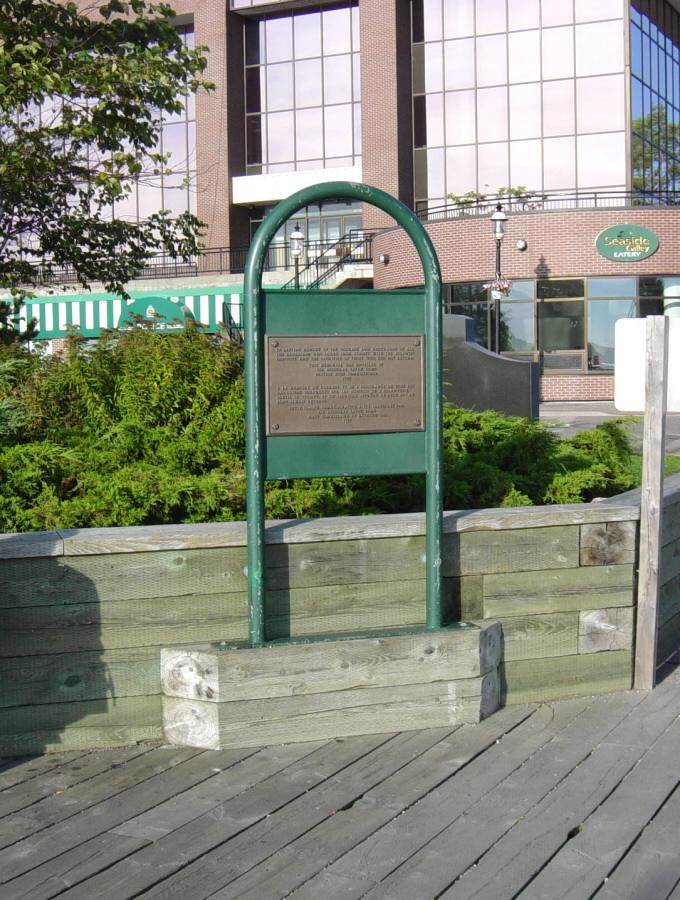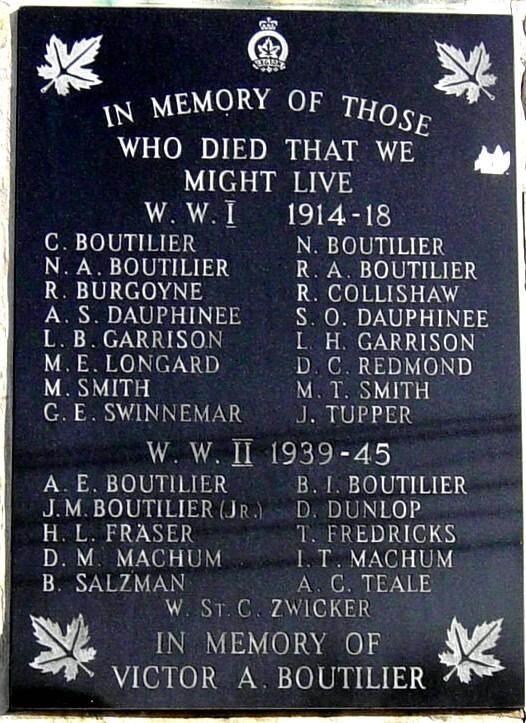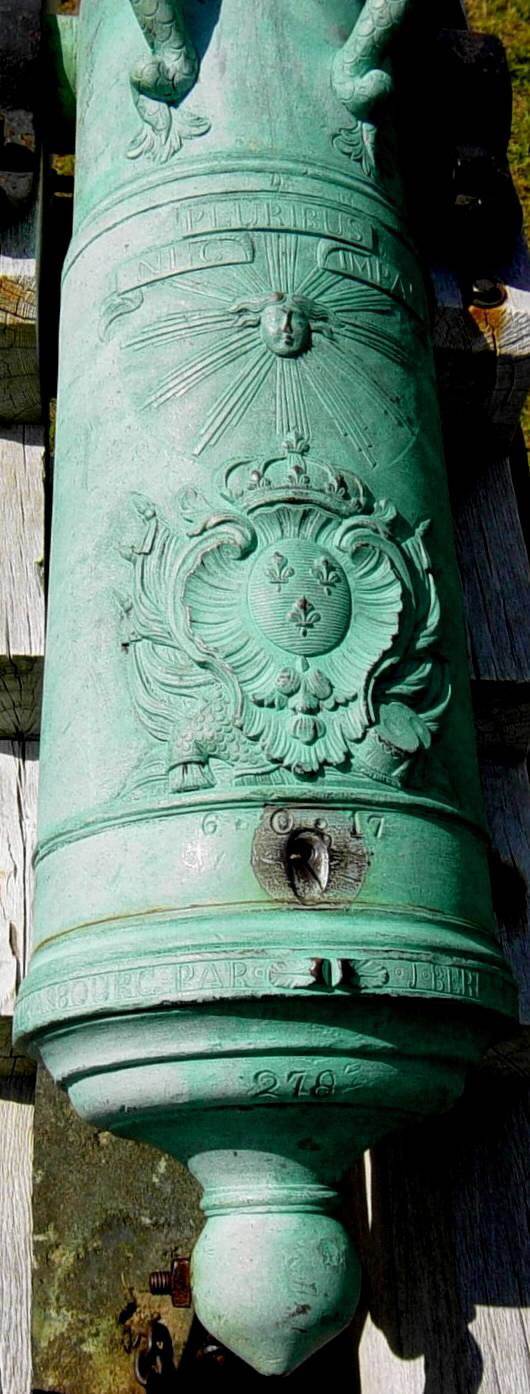
Photographs of
Fort Anne
Bronze Cannon
Cast bronze
Fort Anne Historic Site
Annapolis Royal
Annapolis County
Nova Scotia
Fort Anne is Canada’s oldest national historic site.
It was declared a Dominion (federal) park in 1917.
GPS location: 44°44’31″N 65°31’08″W
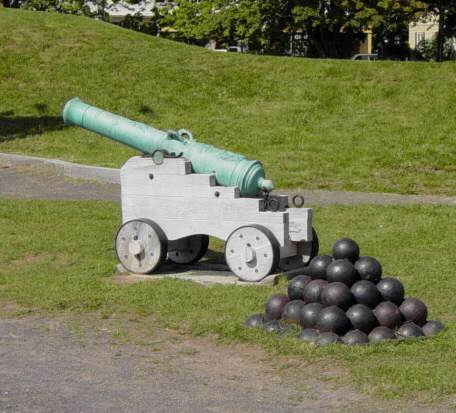
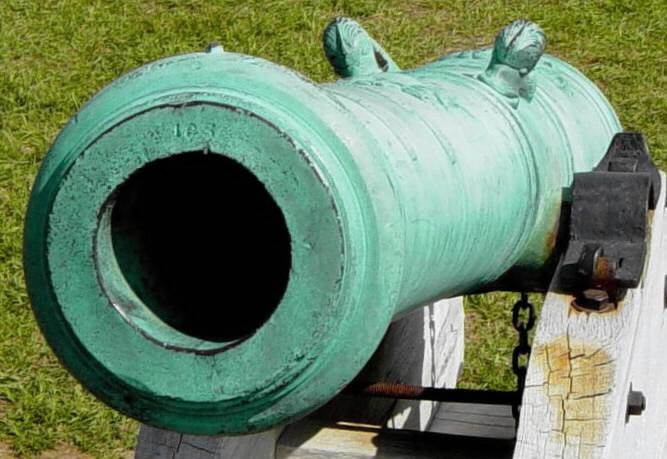
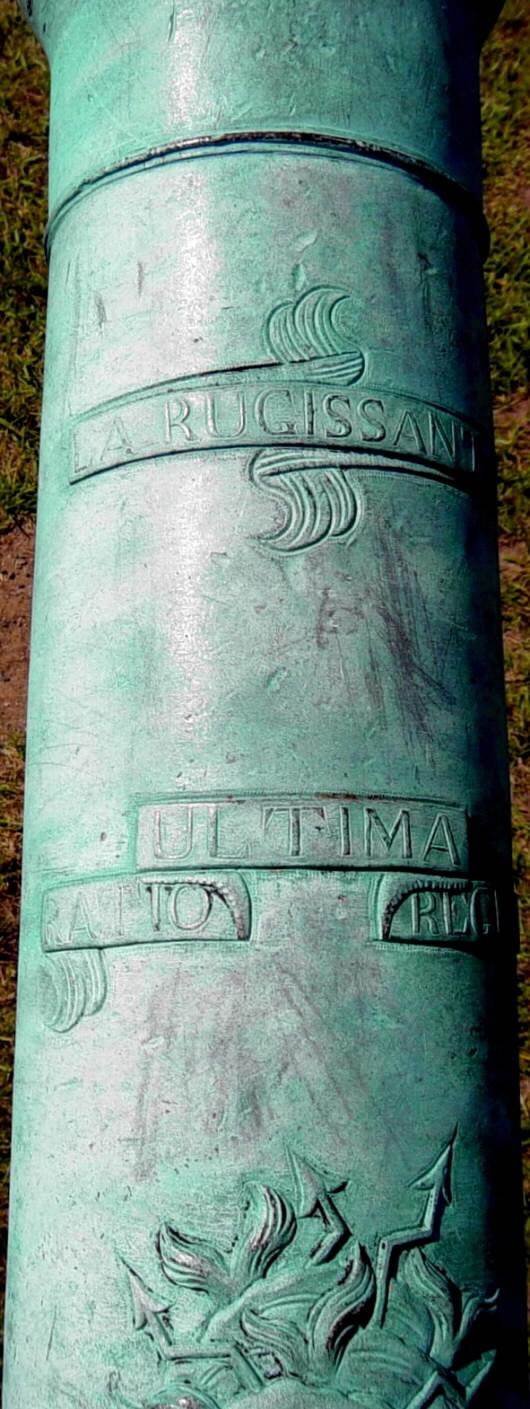
This cannon is named LA RUGISSANT, “The Roaring One”.
|
Bronze Guns of Leutze Park Washington Navy Yard Washington, D.C., U.S.A. http://www.history.navy.mil/cannons/cannons.html Close up of name LE VIGOUREUX (The Vigorous One) on a French bronze cannon http://www.history.navy.mil/cannons/cannons43.html
|
|
Artillery Through the Ages A Short Illustrated History of Cannon… http://www.cr.nps.gov/history/online_books/source/is3/is3c1.htm The cannon of the late 1600s (and well into the 1700s) was an ornate masterpiece of the foundryman’s art, covered with escutcheons, floral relief, scrolls, and heavy moldings… Many guns were personalized with names cast in raised letters on the gun. Other typical names were El Espanto (The Terror), El Destrozo (The Destroyer), |
ULTIMA RATIO REGUM
|
The inscription Ultima ratio regum, “the last argument of kings,” was widely used on European ordinance during this age of royal absolutism. |
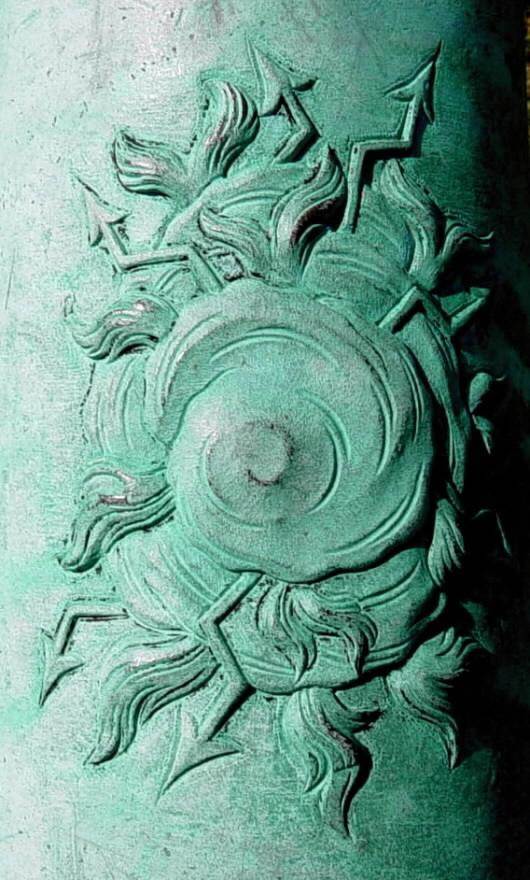
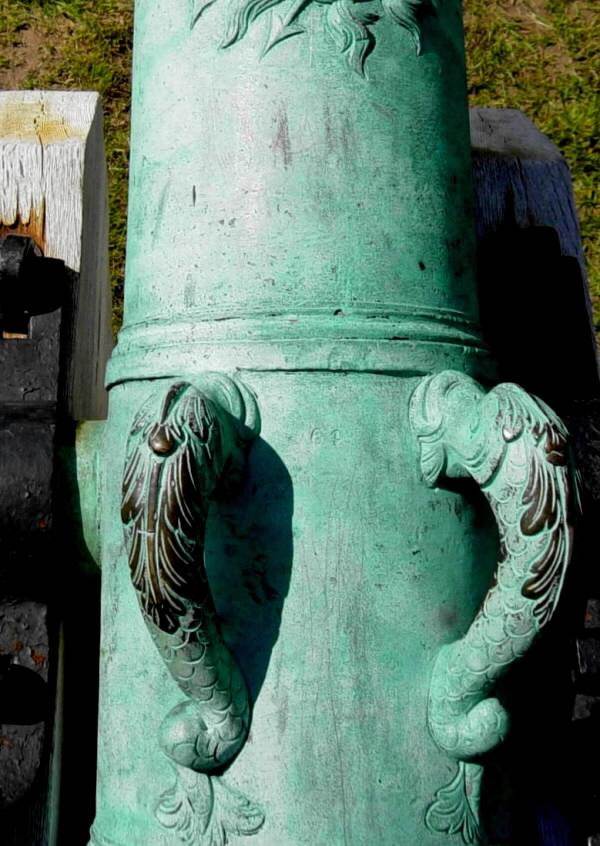
The decorative lifting handles were often cast in the shape of stylized dolphins.
The centerline of the trunnions was placed slightly ahead of the center of gravity of the gun.
The handles were placed so that the lifting point was slightly behind the trunnion centerline.
The first reinforce bears the famous device
of the “Sun King”, Louis XIV
with his motto, NEC PLURIBUS IMPAR.
“Not unequal to many” was Louis’ roundabout way of
describing himself as a match for any number of adversaries.
Source:
http://www.history.navy.mil/cannons/cannons.html

Tha above photographs were taken on 13 June 2003.
Other Old Cannons in Nova Scotia
What’s the big deal about cannons?
Nowadays, cannon and other forms of artillery from the 1700s and 1800s are nothing more than quaint noise-makers. We see them only in the movies and onTV, or at occasional demonstrations at historic sites. Intheir day, cannons were the most powerful, far-reaching and fearsome weaponsavailable…
BronzeBronze is an alloy of copper and tin commonly used in |
|
Brass versus BronzeBRASS: An alloy composed of copper and zinc BRONZE: An alloy composed of copper and tin |
|
BronzeA metal made of two or more pure metals (pure chemical elements), Any alloy, or mixture, of copper and tin is called bronze. Bronze was one of the first alloys developed by metal workers 4000 years ago the Chinese made early coins of bronze. Bronze melts at a lower temperature than iron, reducing the Originally “bronze” was a term for copper alloys having |
|
Brass or Bronze?As we prepare almost every issue of The Artilleryman Magazine We recently came across this in Harold L. Peterson’s “In almost all the contemporary [18th and early 19th centuries]
references the term used is brass. Bronze is almost never mentioned. The only brass guns were those made by the uninformed. — Submitted by Bill Anderson, 1st Continental Artillery |

